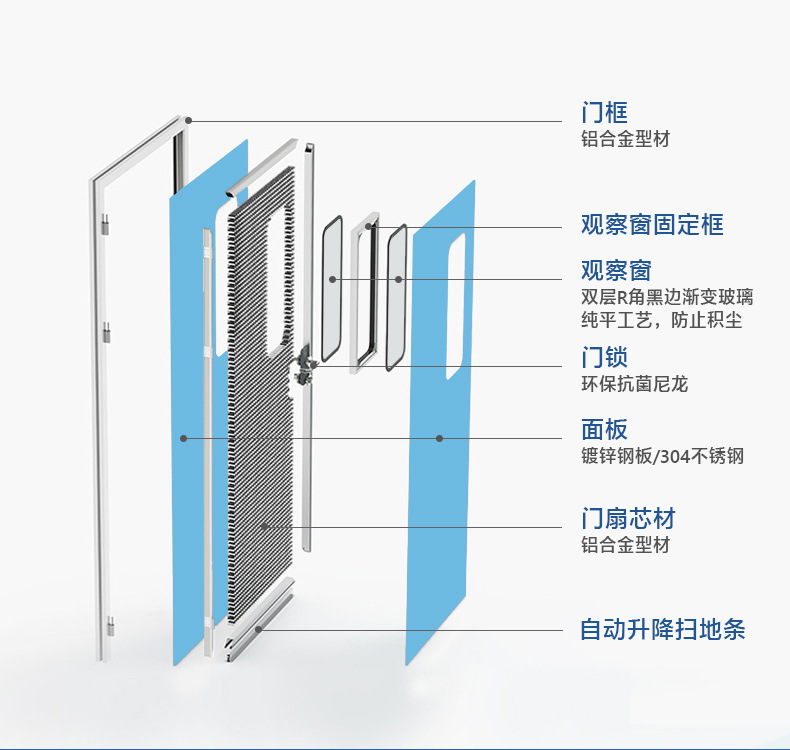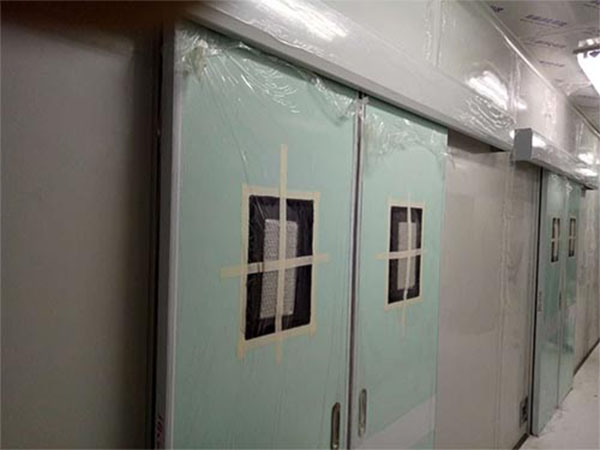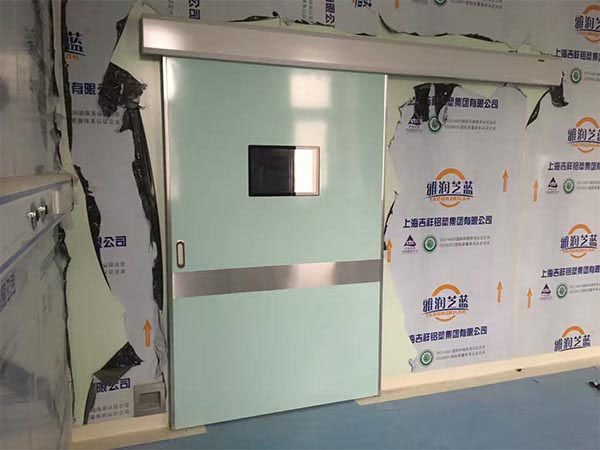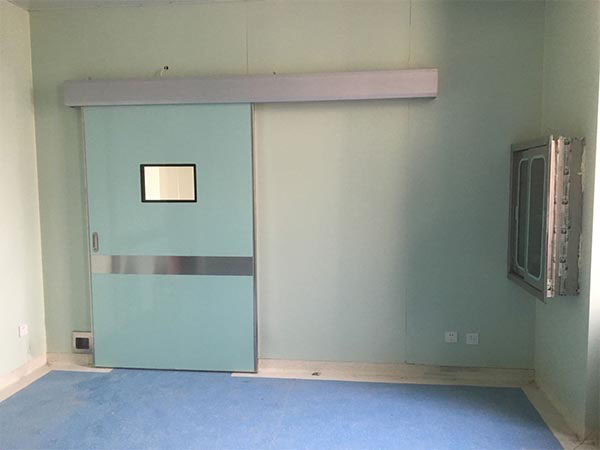Medical doors play a very important role in medical facilities. Medical doors are specifically designed for hospitals and other medical institutions, providing necessary safety and functional requirements for medical work. This article will introduce the different types, characteristics, and applications of medical doors in the medical environment.
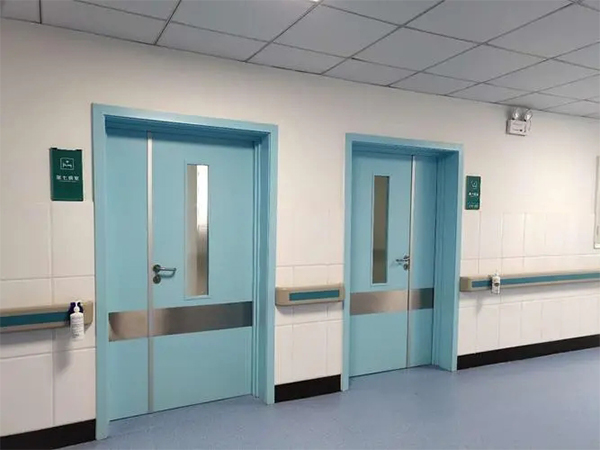
1、 Type
1. Fire doors: An important type of medical door is fire doors. These doors have special designs to prevent the spread of fire, effectively protecting the safety of patients and staff in the hospital. Fire doors are usually made of fire-resistant materials and equipped with fire alarm systems and automatic closing mechanisms.
2. Light soundproof doors: Medical environments need to maintain relative quietness to promote patient recovery and staff focus. Light soundproof doors are doors designed to reduce noise transmission. These doors are made of special materials and structures, effectively reducing external noise interference.
3. Sealed doors: Controlling the spread of pathogens is crucial in medical environments. Sealed doors are widely used in infection control areas such as operating rooms and isolation wards. These doors have a highly sealed feature to prevent the spread of bacteria and other pathogens.
4. Automatic doors: Automatic doors are one of the common types of modern medical doors. They have the function of automatically opening and closing without manual operation, providing convenience and hygiene. Automatic doors can be used for the main entrance, emergency exits, and some special areas of hospitals.
2、 Characteristics of medical doors
1. Safety: Medical doors should have a high degree of safety to protect patients and staff from external hazards. This includes safety features such as fire prevention, theft prevention, and strong wind resistance.
2. Hygiene: Medical doors should be easy to clean and disinfect to ensure hygiene requirements in the medical environment. The use of antibacterial and antimicrobial materials helps prevent the growth of bacteria.
3. Durability: Medical doors need to withstand prolonged and frequent use. Therefore, its materials and structure should have durability and strength to ensure long-term reliability and stability.
4. Functionality: Medical doors should provide various functions to meet the needs of medical facilities. For example, emergency exit doors should have the characteristic of quick opening, and operating room doors should have the characteristics of being sealed and dust-free.
3、 The application of medical doors in medical environments
1. Operating room door: The operating room is one of the key areas in the hospital and requires special doors to ensure safety and hygiene. The operating room door is usually sealed, antibacterial, and dust-free to prevent the entry of external bacteria and dust.
2. Isolation ward door: When dealing with infectious diseases, the isolation ward door is essential. These doors have high sealing and antibacterial properties, effectively isolating patients and pathogens to prevent disease transmission.
3. Emergency exit door: The hospital's emergency exit door is easy to quickly open for evacuating personnel in emergency situations. These doors are usually equipped with emergency alarm devices and directional signs to ensure the safety of personnel.
4. Ward doors: In hospital wards, the requirements for ward doors are relatively simple, but they also require safety and hygiene. These doors are usually light soundproof and easy to clean, providing a relatively private space for patients.
Summary
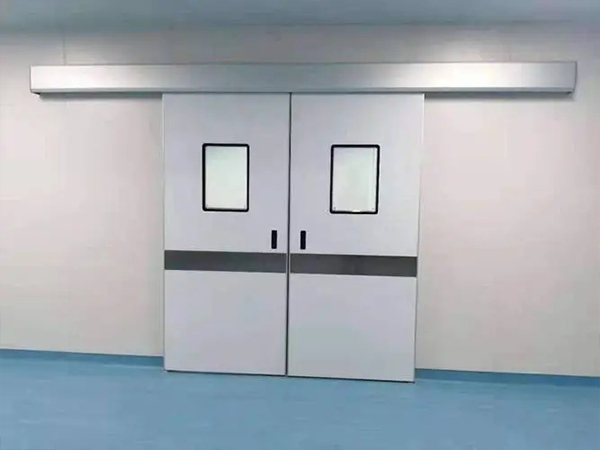
Nowadays, medical doors play an important role in medical facilities, providing necessary safety and functional requirements. Fire doors, light soundproof doors, sealed doors, and automatic doors are common types of medical doors. These doors have characteristics such as safety, hygiene, durability, and functionality. In the medical environment, medical doors are widely used in areas such as operating rooms, isolation wards, emergency exits, and wards.





